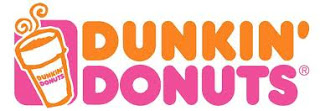Going Gluten-Free? Don't Forget Fiber.
July 31, 2012 RSS Feed Print
If you've recently adopted a gluten-free diet—eliminating wheat, barley, rye, and any food that contains derivatives of these ingredients—you may have inadvertently eliminated something else from your diet as well: fiber.
Getting adequate fiber in the diet is essential for a host of reasons, including maintaining regular bowel movements, maintaining low cholesterol levels, managing your weight, preventing colon cancer, and supporting a diverse and thriving community of friendly gut bacteria. These beneficial bacteria manufacture vitamins, help protect you from foodborne illness, and stimulate the production of immune cells that boost your resistance to other infections.
The average American adult's fiber intake has been estimated at about 16 grams per day—far below the recommended levels of 25 to 38 grams per day for women and men, respectively. Grain-based foods are the primary source of fiber in the U.S. diet, accounting for about 44 percent of total fiber intake among Americans, according to the Centers for Disease Control and Prevention's National Health and Nutrition Examination Survey. Since wheat is far and away the predominant grain in the U.S. diet, this heavy reliance on grains for our fiber intake is bad news for gluten-free dieters.
If fiber is what you're after, you'll need to be sure your diet isn't loaded with gluten-free versions of typical wheat-based convenience foods, like bread, pasta, crackers, waffles, and cereal. The gluten-free versions of these foods are notoriously low in fiber, as they are generally made with high-starch flours like white rice, potato, and tapioca. Furthermore, these products often have up to twice the calories per serving as their conventional counterparts, which can wreak havoc on your weight-loss plans.
Instead, try building your diet around naturally gluten-free, whole, or minimally processed foods, like the ones below, to help you meet your fiber needs.
• Bring on the beans: Skip starchy, low-fiber, gluten-free staples like potatoes and rice, and opt for a side of beans with your meal instead. From French lentil salad and Cuban black beans to Boston baked beans and Moroccan spiced chickpeas, there's no shortage of variety in ways to prepare legumes, and using canned beans is a fast and easy way to speed up meal prep. If cooked bean dishes aren't your thing, try stocking gluten-free bean-based soups like lentil, split pea, or black bean in your pantry and having them for lunch or with a light dinner several times a week. For variety, snack on edamame (boiled soybeans), or look for chips and crackers made from bean flour instead of your usual corn- and rice-based ones.
• Sprinkle some seeds: Gluten-free breakfast cereals are notably low in fiber. Whereas a high-fiber conventional breakfast cereal will have anywhere from 5 to 14(!) grams per serving, the most you can expect from the best gluten-free cereals is only about 3 grams per serving, tops. To boost the fiber content of your gluten-free cereal, try topping it with 2 tablespoons of chia seeds or ground flaxseeds; in addition to fiber, you'll get a hefty, bonus dose of heart-healthy omega-3 fatty acids.
• Go nuts for almond flour: When making gluten-free treats like pancakes or mini-muffins, skip starchy gluten-free flours like rice and tapioca, and look for recipes that feature almond flour instead. This versatile flour, which has three times the fiber (and protein) per one-quarter cup serving than white rice flour, also makes a great gluten-free coating for "breaded" fish or chicken, and it's a fabulous fill-in for breadcrumbs in meatballs. Once opened, keep your bag of almond flour sealed tightly and refrigerated for freshness.
• Pass the popcorn: While popcorn seems like an indulgence, it's actually a healthy, whole-grain snack whose fiber content surpasses other gluten-free, crunchy, salty snacks like potato chips, tortilla chips, and gluten-free pretzels. A 3-cup serving of air-popped corn, sans butter, has less than 100 calories and delivers 3 grams of fiber. Use a dash of salt or sprinkle of nutritional yeast for flavor, and you won't even miss the fat.
• Cook up some gluten-free oatmeal. One-half cup of rolled, gluten-free oats will yield just about 1 cup of cooked oatmeal, and contains 150 calories and 4 grams of fiber. A quarter cup of dry, gluten-free, steel-cut oats will yield about 1 cup when cooked and have roughly the same nutrition credentials. At least two national brands offer gluten-free versions of both types of oatmeal: Arrowhead Mills and Bob's Red Mill. Mix in a generous 1-cup portion of fresh blueberries, and you'll double the fiber of your meal.
• A few great dips help the veggies go down: If you have a hard time making yourself snack on fiber-rich, raw veggies, try experimenting with a variety of great gluten-free dips. The condiment market is exploding with interesting and flavorful combos—from smoky chipotle salsas and garlicky hummuses to artichoke pestos and horseradish mustards—most of which are naturally gluten-free. When your crudité is a delivery system for such savory and interesting dips, you'll be raiding the fridge for those baby carrots and red pepper slices when the 4 p.m. munchies hit.
• Choose a gluten-free fiber supplement: While there are plenty of high-fiber, gluten-free foods to choose from, if you're having trouble meeting your needs through diet alone, there is always the option of a fiber supplement. Psyllium husk, the ingredient in many fiber supplements, is naturally gluten-free, though make sure the brand you buy is specifically labeled "gluten-free" to ensure there was no cross-contamination during production. Konsyl is one such gluten-free product, as are all Metamucil products except the wafers. Among the leading purely soluble fiber supplements, Citrucel is the safest gluten-free choice.
Hungry for more? Write to eatandrun@usnews.com with your questions, concerns, and feedback.
Tamara Duker Freuman, MS, RD, CDN, is a NYC-based registered dietitian whose clinical practice specializes in digestive disorders, Celiac Disease, and food intolerances. Her personal blog,www.tamaraduker.com, focuses on healthy eating and gluten-free living.







